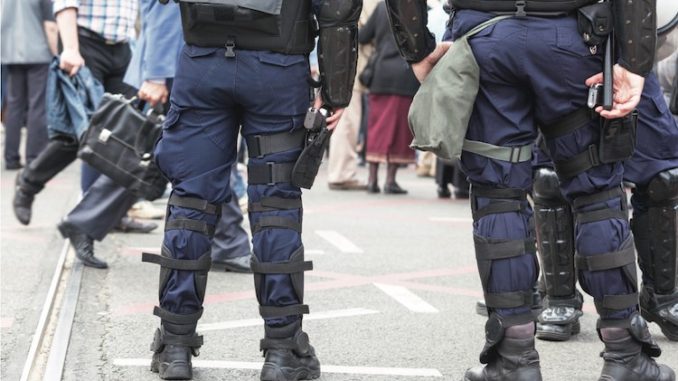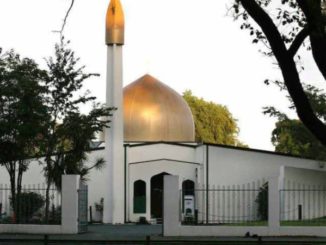
Having been interviewed by Line of Defence in the days following the Christchurch Mosque Attacks, former DPMC National Security Policy Advisor Dr Richard Shortt provides his perspectives twelve months on.
15 March 2019 saw four issues collide and explode with horrific brutality into our collective consciousness. It was truly a stripping away of naivety and innocence for our country. Those four issues are:
- Decades long failure of New Zealand governments and agencies to protect citizens from Military Style Semi-Automatic (MSSA) firearms;
- Terrorism as a reality for New Zealand, not an abstract concept or something happening elsewhere in the world;
- Confirmation that yet another type of violent extremism poses a real threat to life, and
- Reinforcement of the fact New Zealand authorities must now be able to respond to violent extremism on home-soil, or wherever they detect it, because the Internet connects us all.
The sad truth about the gun buy-back scheme, implemented with praiseworthy speed by the current government, is that it was 29 years too late. And, because of that delay 51 people died and 40 were seriously injured.
Ministers were warned following the Aromoana mass-shooting in November 1990 about the dangers of such firearms in private hands in New Zealand. Six years later they received further confirmation of that danger via the Port Arthur mass-shooting in Australia, yet our leaders still failed to take steps to better protect the public.
Successive governments of all political hues were reminded of the dangers over the following decades by officials and all failed to take any steps to outlaw such weapons.
Now, one year on from Christchurch we have seen laws change, guns purchased and hopefully a reduction of the risk to us all. Will the law changes and buy-back alone see MSSA weapons go out of circulation in New Zealand? No, unfortunately not.
Some owners have not surrendered their weapons, criminals have not surrendered theirs, and no amount of border controls and policing can guarantee that such weapons will not enter the country illegally.
That said, the law change was required and sensible, the buy-back offered a pathway out of ownership of the now banned weapons and those now found in possession of such firearms will be subject to penalties under the law. It’s the best we could hope for, I suggest.
Enjoying this article? Consider a subscription to the print edition of Line of Defence Magazine.
My second point goes directly to the question “Has the threat landscape changed.” Absolutely it has, in New Zealand and globally. Terrorism is now a reality for New Zealand. It has names and locations attached; it is etched into our collective memory.
It is no longer a word that cannot be used in New Zealand, as I was advised many years ago as a national security policy advisor in the Department of Prime Minister and Cabinet, and as the leader of the country’s Combined Threat Assessment Group. It is no longer abstract or ‘over there’. It is here, it is bloody, it destroys lives and it must be effectively prevented and responded to.
What is more, we now have to add a further type of violent extremism to the landscape. The type supported by the shooter in Christchurch.
Recently in Australia, a government minister rebuked the Director-General of ASIO for publicly referring to this new type as ‘violent right-wing extremists’. I’m sure the rebuke was to placate her right-wing voters, who were, I am prepared to suggest, probably supporters of the calls a year or two ago to “call ‘violent religious extremism’ ‘Islamic extremism’ because that’s what it is”.
Unfortunately, for the minister and her voters this new type of extremism is inextricably linked to the far-right of politics and was described accurately.
For many years the Federal Bureau of Investigation (FBI) in their annual threat assessments described far-right domestic groups and individuals as the greatest violent extremism threat in the USA. Then, along came 9/11 and the focus shifted, but now, here in New Zealand and in the USA (and elsewhere), the focus is firmly on all types of violent extremism as they are all just as deadly and corrosive as each other.
As we know, a Royal Commission into the Christchurch shootings is underway. This is another praiseworthy response by government. I am confident the commission will present a variety of conclusions and recommendations that will guide this government and any future governments in their response to violent extremism.
While not wishing to second guess the Commission’s outcomes, my own thoughts on what may be discovered include:
Firstly, that it is very challenging to identify an individual who is a threat to life if they are careful in keeping their thoughts and intentions off the ‘radar’. Not all criminals (for this is what the person responsible for Christchurch is) ‘telegraph’ their intentions so intelligence or law enforcement agencies have a chance to interdict them;
Secondly, that intelligence and law enforcement agencies are bound by the law. GCSB et al. were strongly criticised not so long ago for having stepped outside their legal boundaries. If we – society – want greater surety of protection, we may need to adjust our laws to empower agencies to look more widely and deeper in their efforts to detect danger. In doing so strong protections need to be applied to those powers to ensure public confidence is maintained.
Finally, as someone who has worked in collaborative environments and researched interorganizational relationships, I will be interested to see what findings the Commission arrives at concerning the relationships between intelligence and law enforcement agencies in New Zealand.
I hope they are found to be robust, lawful and collaborative in nature, with effective oversight, leadership and legislative support. If any of those elements are not present or are determined to be ineffective, they must be fixed as a priority, and, I argue, can be without too much additional expense.
In conclusion, I was asked to consider the key takeaways from the attacks and their aftermath.
Firstly, governments should listen closely to their expert advisors – particularly when the advice is repeated and reinforced by events. We may have avoided the horrors of March 15th, 2019, if New Zealand had effectively dealt with MSSA firearms nearly three decades ago. The alleged shooter came to New Zealand for a reason. He clearly had an intent but needed a capability, and his own country had acted decisively on the capability issue many years ago.
Secondly, violent extremism is not limited to one flavour or colour. It cannot be ignored and must be watched for, identified, and called out for what it is. Let’s not get too hung-up on labels. If a person or group believes that killing another is a legitimate way of achieving their aims, then that’s violent extremism.
Finally, the way people interact and communicate has been irreversibly changed by the advent of the Internet. Geographic isolation no longer means ideological isolation or inability to mix with, draw strength from or be motivated by like-minded individuals or groups in real time.
Individuals who carry out acts of violent extremism are most often not loners, disconnected from the world and acting purely on their own thoughts. They are often connected to others via the Internet, they are in fact part of a virtual community.
Our intelligence and law enforcement agencies need to be able to scan the Internet on all its levels to seek out and disrupt those who are disposed towards violent extremism.
It requires laws to enable it, resources to do it and coordination and collaboration to ensure a small country like New Zealand can add a strong link to the chain of global security, because violent extremism is now a local as well as a global issue.








